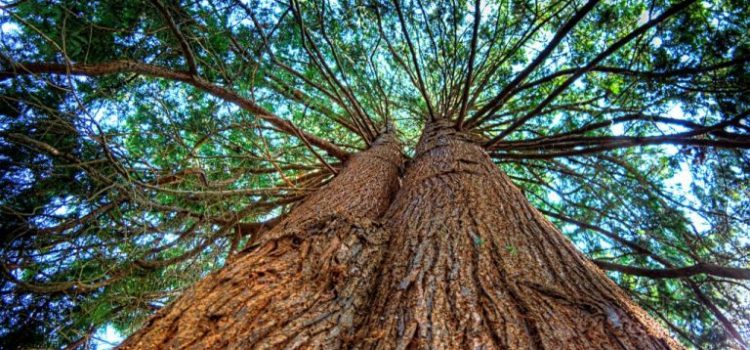
Author: Sara Burrows for www.ReturnToNow.net — February 7, 2020
Trees form friendships, look after each other, and even “cuddle,” claims author of The Hidden Life of Trees

Trees have friends and can even “form bonds like an old couple, where one looks after the other,” claims German forester Peter Wohlleben in his book The Hidden Life of Trees.
“These trees are friends,” he told a New York Times reporter. “You see how the thick branches point away from each other? That’s so they don’t block their buddy’s light.”

“Sometimes, pairs like this are so interconnected at the roots that when one tree dies, the other one dies, too.”

While some might dismiss his romantic anthropomorphic language as nonsense, Wohlleben’s book is based on decades of scientific research.
According to biologists, trees can count, learn, remember, send nutrients to sick neighbors, and warn each other of danger by sending electrical signals across a fungal network known as the “Wood Wide Web.“
“I use a very human language,” he explains. “Scientific language removes all the emotion, and people don’t understand it anymore. When I say, ‘trees suckle their children,’ everyone knows immediately what I mean.”
Trees are very social beings, he claims in a documentary called Intelligent Trees. “The parents, the mother trees, are looking after their offspring.”
While it used to be assumed that trees compete for nutrients and
sunlight, more recent research has demonstrated that within species,
trees support each other.
“If a tree is attacked by insects, it warns all the others,” Wohlleben says.
Germans used to artificially space out trees in their plantation forest to ensure they got enough sunlight. But, in his decades of work as a forest ranger, Wohlleben has demonstrated that creating too much space between trees disconnects them from their support networks.
“Trees like to stand close together and cuddle. They love company.”

When we think of a tree, we think only of what is visible above ground, but the major part of its life takes place underground, explains ecology professor Suzanne Simard.
In the film, she explains how trees communicate underground through a vast tangled web of hair-like mycelium that interconnect their roots.
“Trees don’t do well when they’re by themselves. They really are caring for each other. They’re making sure they’re a productive, healthy, vibrant, diverse community of trees.”

